This website uses cookies to improve your browsing experience and analyze the use of the website. Learn More
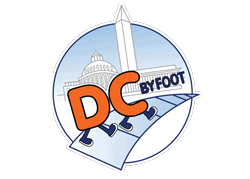

How to Tour the Supreme Court

This post covers how to attend a U.S. Supreme Court tour as well as courtroom lectures and oral arguments with tips on how to plan your visit and what you might see.
- Where is the Supreme Court
- Guided Tours + Exhibits
- Courtroom Lecture
- Attend a Supreme Court Case
- Visit the US Capitol and Library of Congress
- Other Things to Do in DC
HOW TO GET TO THE SUPREME COURT
The Supreme Court Building is located at 1 First Street St NE across the street from the US Capitol Building and the Library of Congress.
Use this link for directions to the Supreme Court .
Or let us take you here on one of our pay-what-you-like Capitol Hill Tours .
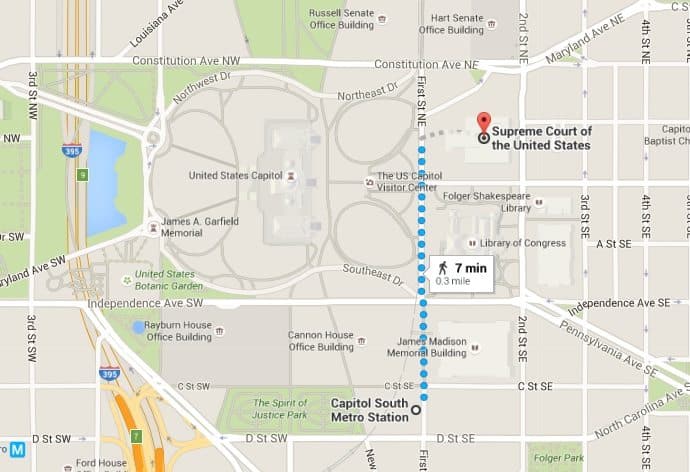
It is a 7 min walk from the Capitol South Station Metro ( Blue , Orange , Silver ). Exit the station and continue north on First Street for two blocks.
It is also about a 15-minute walk from Union Station ( Red ), which has a paid parking garage.
If you are new to DC's subway system, then read our guide on how to use the DC Metro system .
There are no parking facilities at the building. Street parking is very limited. You can reserve a space at nearby commercial garages through a service called SpotHero .
Supreme Court Hours:
The Supreme Court is open on weekdays 9 am - 3 pm , excluding Federal Holidays. The building is not open on the weekend.
Like most federal buildings, you will be required to enter through security. There are two doors on either side of the main steps on the plaza level to enter the building.
Prohibited items include weapons and other dangerous items.

SUPREME COURT TOURS + CURRENT EXHIBITS
The Supreme Court currently does not offer guided tours; visitors are encouraged to tour the building independently ( or on a tour with us !).
In reality, visitors are limited to only the public portions of the building, which are mostly the exhibits on the ground floor as well as the Main Hall on the 2nd floor.
There are several opportunities to visit the main courtroom (see below sections on attending a court lecture or to hear a case ).
Once through security, you will be on the ground floor.
Here you will find a 24-minute film that covers the history of the building, with interviews with the Chief Justice as well as Associate and former Justices.
It's on this floor where you will also find the current exhibitions .
- The Supreme Court Building: America's Temple of Justice
- Reading the Law: Legal Education in America
- Sandra Day O'Connor, First Woman on the Supreme Court
- The Power of Image: Charles Evans Hughes in Prints, Photographs, and Drawings
- Capturing Justice: Judicial Portraits by Augustus Saint-Gaudens
Supreme Court Building Tours
We are able to offer small group private tours that visit inside the Supreme Court on private versions of our Capitol Hill & Library of Congress Tour!
This 2 hour tour would tour inside the Supreme Court Building, inside the Library of Congress & end with tickets to tour inside the Capitol Building with their professional docents (this tour would be an additional 50 minutes to our 2 hour tour)
Our almost twice-a-day public version of this tour does not guarantee entrance into the Supreme Court (though sometimes we can visit inside based on security and opening). On private tours, we can schedule it to ensure we can go inside the Supreme Court.
Contact us to book a private Capitol Hill tour that enters the Supreme Court!
HOW TO ATTEND A SUPREME COURT LECTURE
Since this is a working federal building, you are limited as to where you can go on your self-guided tour.
The only way to visit the courtroom is by attending a docent lecture or attending a case.

You can read about attending a case below but if you are visiting on a day that the court is not hearing a case, you can still have a seat in the courtroom and listen to the history of the court and the building.
30-minute courtroom lectures are held every half-hour from 9:30 am to 3:30 pm.
Seating is first-come, first-served, so during the busy spring and summer months, expect to get there early to wait in line.
For the most up-to-date information on when lectures are scheduled, visit the lecture calendar .
HOW TO ATTEND A SUPREME COURT ORAL ARGUMENT
While you can visit the Supreme Court courtroom as a visitor for lectures, cases are also open to the public.
Called Oral Arguments, these are the 1-hour long sessions where each side is allowed 30 minutes to argue before the court.
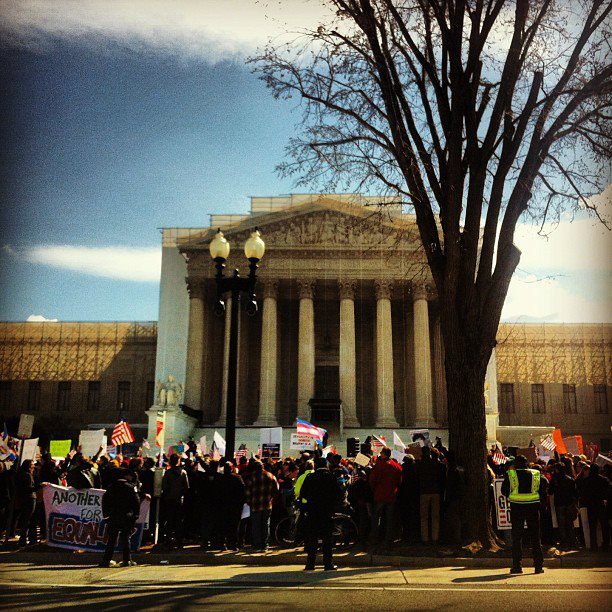
From the first Monday to October to Mid-April, cases are generally heard on Mondays, Tuesdays, and Wednesdays at 10 am and at 11 am, with additional afternoon sessions as needed.
There are two ways to attend a Supreme Court case.
You could either secure a seat and witness the entire Oral Arguments, or you can catch a quick 3-minute glimpse of the proceedings. (the 3-minute line is suspended still as of Feb 2024)
These two lines form on the plaza before each case.
For a landmark Supreme Court case, some people will line up days in advance to guarantee a spot. On a non-high-profile day, people arrive around 6 am-7 am.
Normally, only the first 50 are able to get in for the entire session.
Numbered tickets are given out prior to seating to allow you time to go to the restroom, cafeteria, and cloakroom.
If you don't get a seat , you can also do a walk-through where you stay for a few minutes and then move on. You can rotate through as many times as you'd like by getting back in line. (This is not an option as of Feb 2024. We hope it returns soon!)
You can also attend Bench Mondays (Mondays, 10 am, mid-May through June) to hear the court opinions and decisions.
These are about 15 - 30 minutes long, but can also form long lines for high-profile cases.
To see what cases are being argued, visit the Argument Calendar.
SUPREME COURT JUSTICES
How many justices are on the Supreme Court?
There are 9 Supreme Court Justices in total: 8 associate justices and one Chief Justice.
How do you become a Supreme Court Justice?
There are only two requirements to be a Supreme Court justice. It is not based on age, citizenship, or experience.
You must be nominated by the President and approved by Senate. It is a lifetime appointment that one holds until they retire.
Who is the Chief Justice of the Supreme Court?
The Supreme Court Chief Justice is a position appointed by the President, so it is not relevant to the length of time they serve on the court.
The current Supreme Court Justice is John Roberts.

Who are the current Supreme Court Justices?
- Clarence Thomas (1991)
- John Roberts (2005
- Samuel Alito (2006)
- Sonia Sotomeyer (2009)
- Elena Kagen (2010)
- Neil Gorsuch (2017)
- Brett Cavanaugh (2018)
- Amy Coney Barrett (2020)
- Ketanji Brown Jackson (2022)
VISIT THE U.S. CAPITOL BUILDING AND THE LIBRARY OF CONGRESS
Why not make a half-day of it and visit both the U.S. Capitol Building as well as the Thomas Jefferson Building of the Library of Congress?
Both are adjacent to the Supreme Court Building.
You could also have lunch at the Capitol Visitor Center.
For more information on visiting and touring both buildings, click on the links below.
- U.S. Capitol Building
- Library of Congress

Choose a Destination... I want them all PLUS general travel tips. Amsterdam Berlin Boston Charleston Chicago Dubai Lisbon London Los Angeles Miami Nashville New York City New Orleans Paris Philadelphia Prague Rome San Francisco Washington DC
About The Author

Canden Arciniega
North america, united kingdom & ireland, middle east & india, asia & oceania.

- San Antonio
- St. Augustine
- Washington DC
- Home Main nav menu item
- MAP & STOPS Main nav menu item
- Things to DO Main nav menu item
- SCHEDULE Main nav menu item
- REVIEWS Main nav menu item
- FAQS Main nav menu item
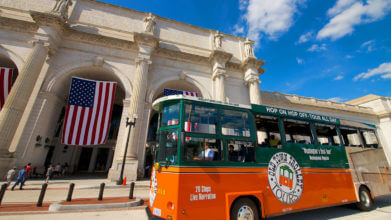
☆☆☆☆☆
★★★★★
857 reviews
Old Town Trolley Tours Washington DC 4.2
U.S. Supreme Court
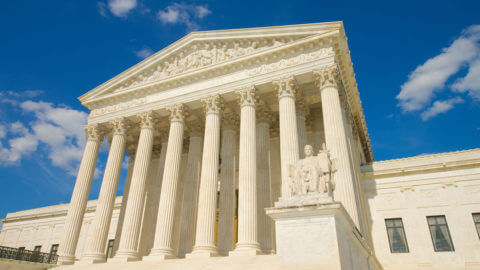
Upon arrival at the Supreme Court, visitors are often struck by the imposing marble building. Architecturally magnificent, the neoclassical structure was built in 1935 to become the permanent home to the Supreme Court. Walking along the hallway towards the Courtroom, guests are greeted by busts of all the former Chief Justices. The Supreme Court is the highest judiciary authority in the United States and hears about 100 cases each year, although more than 7,000 are submitted before them. Visitors can tour the Supreme Court building, hear lectures on the history of the court and how it works, sit in on sessions on specified days and times and view various exhibits throughout the year.
Despite its central role as one of the three main branches of government outlined in the U.S. Constitution, the Supreme Court did not have its own venue to conduct business for the first 145 years of its existence. The Court initially met in the Merchants Exchange Building while the capital was located in New York. When the nation’s capital moved to Philadelphia beginning in 1790, the Court met in Independence Hall and City Hall. With the establishment of the federal city 10 years later, the Supreme Court occupied chambers in various parts of the Capitol Building. It would also convene in a private residence for a short time after British soldiers burned Washington, D.C. during the War of 1812. The Court would return to the Capitol and occupy the Old Supreme Court Chamber from 1819 until 1860. With expansion of the Capitol, the Court was relocated and convened in the Old Senate Chamber from 1860 until 1935.
Brief History of the Supreme Court Building
Former president and then Chief Justice of the Supreme Court, William Howard Taft persuaded Congress in 1929 to authorize the construction of a separate building for the Court. Architect Cass Gilbert was selected to design the new federal building. The construction project began in 1932. Neither Taft nor Gilbert survived to see the completed building, which was finished in 1935. Chief Justice Charles Hughes and Cass Gilbert, Jr. oversaw the construction of the new Courthouse, which was completed under budget.
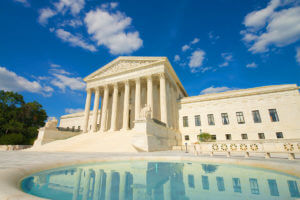
The Supreme Court Building occupies a site that was once the setting of the Old Brick Capitol, which served as a temporary capitol from 1815 until 1819. The building was also a private school boarding house and prison. It was razed in 1929 to make room for the new Supreme Court Building. A basketball court on the building’s fifth floor is colloquially known as “the highest court in the land.” The Supreme Court Building is one of only a few buildings designated as a National Landmark that is not listed on the National Register of Historic Places .
Must See Exhibits
The Supreme Court Building does not offer guided tours. You are encouraged to view the public spaces at your own pace. The exterior grounds as well as portions of the ground and first floors are open to the public. The building’s main façade faces west toward the U.S. Capitol . The main plaza includes fountains, flagpoles and benches as well as marble candelabra depicting “Justice” holding a sword and scales. A bas-relief sculpture of the Greek deities known as the Three Fates knit the thread of life. The base of each flagpole contains symbolic designs of scales, a sword, pen and book as well as the elements of earth, air, water and fire.
Two sculptures of seated figures by James Earle Fraser flank the main entrance. While the female figure entitled Contemplation of Justice is situated on the left, the male figure Guardian of Authority is found on the right. The 6.5-ton bronze doors depict historic scenes from the development of law created by John Donnelly, Jr. Above the entrance is the inscription “Equal Justice Under Law.” On the east side of the building, there are several sculptures of famous lawgivers by Hermon MacNeil. These include Confucius, Moses and Solomon. The east façade bears the inscription “Justice, the Guardian of Liberty.”
Inside the building, visitors can tour the Great Hall. It features busts of former chief justices and friezes depicting heraldic devices and profiles of famous lawgivers. The most famous is the 1883 bust depiction of John Marshall by William Wetmore Story. It stood on the west lawn of the Capitol until it was relocated in 1981. You can also see two five-story self-supporting bronze and marble staircases. The Court Chamber features 24 imported Italian marble columns as well as sculpted marble panels of famous lawgivers and legal themes.
Seating during oral arguments and other proceedings in the courtroom are available to a limited number of guests on a first-come, first-served basis. Various lectures, films and court-related exhibits are offered throughout the day. Docents present lectures about the courtroom that last approximately 30 minutes. The lectures start at the bottom of the hour when the court is not in session.
Know Before You Go
The Supreme Court Building is open Monday through Friday from 9 a.m. until 4:30 p.m. with the exception of federal holidays. It is closed Saturdays and Sundays. Portions of the building may be cordoned off when Court is in session. Visitors pass through security and enter the building from the plaza located beside the main steps. Admission is free of charge. The largest crowds gather from March through June . Because the building contains working offices, visitors are asked to tour as quietly as possible. Video and still photography are prohibited. Eating and drinking are only allowed in the cafeteria. The closest Metro stops are Capitol South on the Orange, Blue and Silver lines and Union Station on the Red line
Attractions Nearby
Library of Congress
Featured in scenes of the film “National Treasure: Book of Secrets,” the Library of Congress is the oldest cultural institution in America. You can take a one-hour docent-led guided tour of the Thomas Jefferson Building to learn about the building’s art and architecture. The narration also includes information about the Library’s history and collection as well.
U.S. Capitol
A symbol of American democracy across the globe, the U.S. Capitol is among the most architecturally impressive buildings in the country. During public tours, visitors can learn about its history as well as view the Rotunda and the Crypt along with sculptures, paintings and other works of art.
Upper and Lower Senate Park
Adjacent to the north portico of the Capitol, Upper and Lower Senate Parks feature landscaped gardens, a reflecting pool and fountains. You can enjoy shade tree-lined pathways, memorials and the historic Summerhouse.
DC Old Town Trolley Tour
Old Town Trolley is a convenient way to explore the Supreme Court while maximizing your vacation time. Upon this lofty perch sits the iconic marble facade where the most important legal decisions in the United States are made. Find the lowest price packages by purchasing tickets direct through our website.
You may also like...
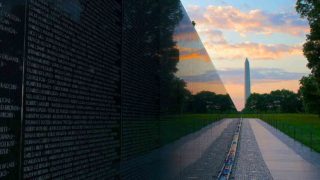
An official website of the United States government
Here's how you know
Official websites use .gov A .gov website belongs to an official government organization in the United States.
Secure .gov websites use HTTPS A lock ( Lock Locked padlock icon ) or https:// means you’ve safely connected to the .gov website. Share sensitive information only on official, secure websites.
Supreme Court of the United States
The U.S. Supreme Court is the final appellate court of the U.S. judicial system. It has the power to review and overturn the decisions of lower courts. The Supreme Court also has original jurisdiction (being the first and final court to hear a case) in certain cases involving public officials, ambassadors, or disputes between states.
Phone number
- 1-202-479-3000
- 1-202-479-3030 (visitor information)
1-202-479-3472

Main address
Have a question.
Ask a real person any government-related question for free. They will get you the answer or let you know where to find it.
U.S. Supreme Court Tours and Information

U.S. Supreme Court Tours
Please note that the Supreme Court is currently closed to the public.
What do you need to know? Building Hours & Entrances Monday – Friday (except Federal Holidays) 9 a.m. – 4:30 p.m. Closed on Saturday and Sunday Visitors may enter the building from the Plaza doors located on each side of the main steps. A wheelchair accessible ramp is located along Maryland Avenue on the left side of the building. All visitors must pass through security screening before entering the building. During the months of March – June, visitors should anticipate longer wait times to enter the building due to larger crowds visiting the Nation's Capital. Location and Directions The Supreme Court of the United States is located on First Street NE between East Capitol Street and Maryland Avenue, adjacent to the U.S. Capitol and the Library of Congress. View area map. By Metro (Subway): The closest Metro stops are: Capitol South (Orange, Blue and Silver Lines, 0.3 miles) Union Station (Red Line, 0.5 miles). By Metro Bus: The Circulator (Navy Yard Line), 96, 97, and A11 buses all stop in front of the Supreme Court Building. The 32, 34, 36, and 39 buses stop at First Street and Independence Avenue, a two block walk from the Building. Additional information on riding the Metro is available at the Washington Metropolitan Area Transit Authority. By Train: Amtrak, VRE, and MARC trains service Union Station, which is located approximately 0.5 miles from the Court. By Car: Street parking is extremely limited near the Supreme Court. The closest public parking garage is located at Union Station. Please note that the Supreme Court is not accessible by private bus or passenger van. Please see designated bus routes and restrictions. Cafeteria, Gift Shop, and Building Amenities A Cafeteria serving a variety of sandwiches, soups, salads, and beverages is open to the public from 7:30 a.m. until 4 p.m., Monday through Friday. A Gift Shop is located on the Ground Floor and is open from 9 a.m. until 4:25 p.m., Monday through Friday. The Gift Shop features extensive offerings of books and other instructive materials to enhance your understanding of the Court's history. Other offerings include educational games, learning aids, and gift items associated with the law and the Supreme Court. For your convenience, an ATM, public telephone (TTY/TDD), and vending machines are available on the Ground Floor. Public restrooms are located on the First and Ground Floors. Visitor Etiquette The Supreme Court is the highest court in the Nation for all cases and controversies arising under the Constitution or laws of the United States; therefore, visitors are asked to follow a few general guidelines. • Be prepared to pass through security screening at your point of entry. All items must be screened in x-ray machines and all visitors will be asked to pass through metal detectors. • Please tour the building quietly as working offices are adjacent to all public halls. Any visitors unable to maintain proper decorum will be asked to leave by the Supreme Court Police. • No photography or video recording is permitted inside the Courtroom. • Smoking is prohibited inside the building. • Consumption of food and beverages is permitted only in the Cafeteria and vending machine alcove. • Visitors may not touch portraits, busts, or other artifacts on exhibition. Accessibility Building Access and Parking Ramp access to the building is located along Maryland Avenue on the left side of the building. Limited handicap parking is also available along Maryland Avenue. Wheelchair Availability and Access A limited number of wheelchairs are available free of charge at your point of entry. Wheelchairs may be obtained from a Supreme Court Police Officer. Elevators are available throughout the building with access to all public areas. Assistive Listening Devices When Court is sitting, induction loop, FM and infra-red listening systems for the hearing impaired are available. Devices may be obtained from a Supreme Court Police Officer or Courtroom Attendant as you are being seated. Visitors' Film The film is accompanied by open captioning at each showing. TTY Telephone A wheelchair accessible, text telephone (TTY) is available in the vending machine alcove adjacent to the Maryland Avenue door. How do I get scheduled for a tour? Click here to vist the the Supreme Court website.
Breaking News

Courtroom access: An online quest: “how to watch a Supreme Court argument”
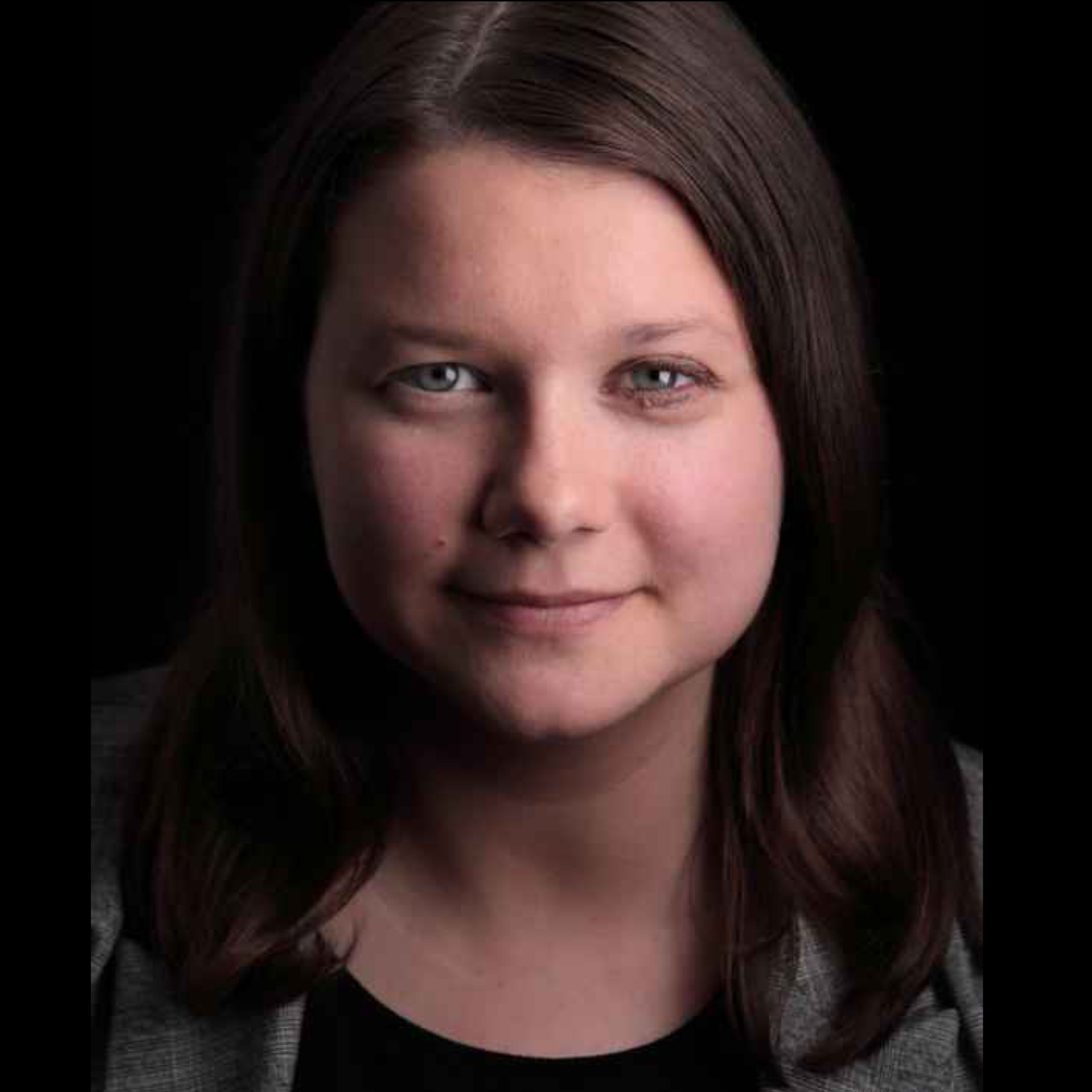
If you wanted to find out how to see the most powerful court in the United States in action, you would probably turn to the internet first.
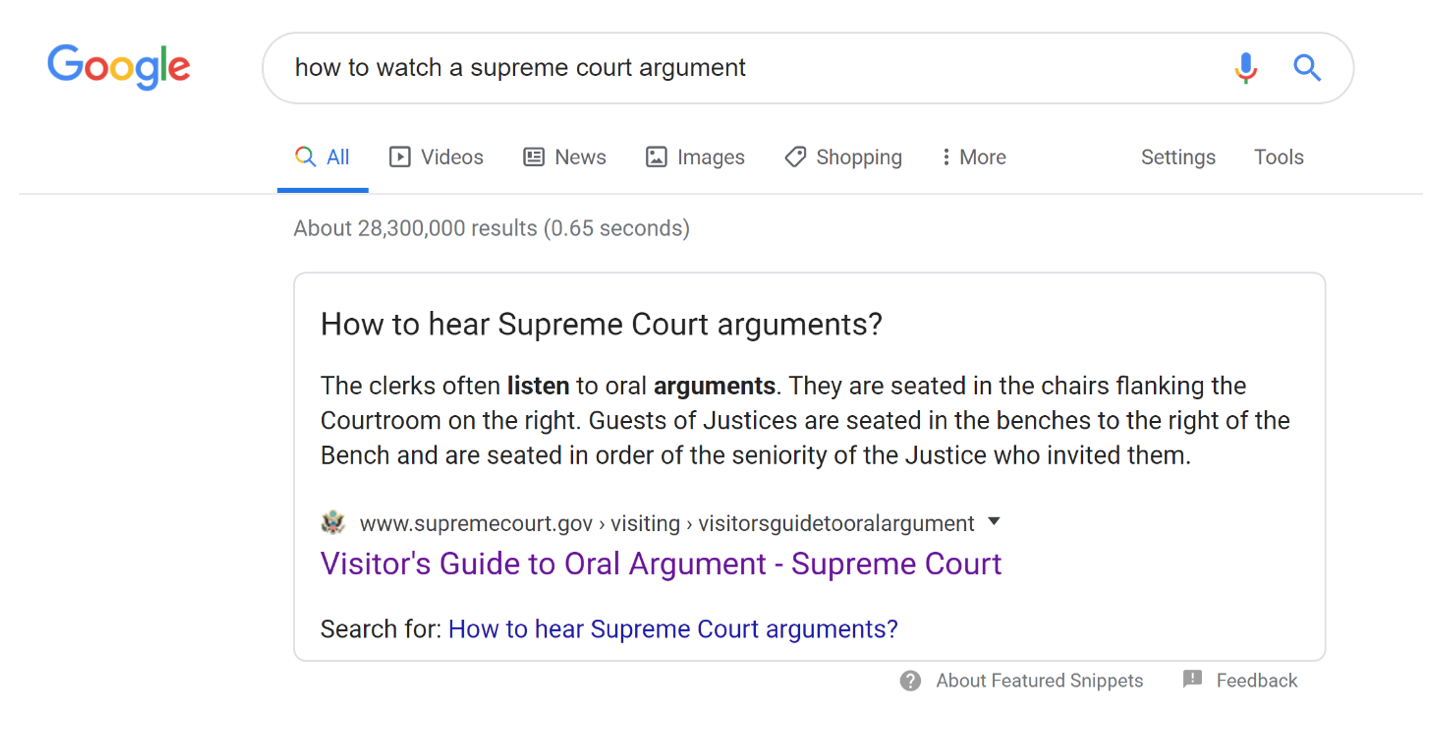
The first result that pops up comes from the official website of the Supreme Court and looks promising: Visitor’s Guide to Oral Argument . The last expandable header on the page, “Courtroom seating,” provides some useful information:
- Two lines form on the Supreme Court’s plaza for the first oral argument of the day, which begins at 10 a.m. — a line for attending the full argument and the three-minute rotating line.
- Seating begins at 9:30 a.m. for those attending the full argument and at 10:00 a.m. for those in the rotating line.
The website’s Frequently Asked Questions include “What time should I start lining up to attend oral argument?” The court declines to make a specific judgment but advises that the line may form before the building opens . “Visitors may begin lining up … as early as they feel comfortable.”

One of the top search results is an article from the American Bar Association intended to help lawyers check off “attending a Supreme Court oral argument” from their “career bucket list.” The author advises first-time visitors to “arrive early,” because the last time he attended oral argument, a group of law students were camped out by 5 a.m., making them the first ones in line.
In a post on this blog, Steven Mazie, the Supreme Court reporter for The Economist and a professor at Bard High School Early College Manhattan, offers advice gleaned from a visit to the court with a group of 20 students. Warning visitors to “gird for battle,” Mazie recounts that he and his students stood in line for two hours and 45 minutes (without bathroom access) and waited inside the building for another two and a half hours just to sit in the back of the courtroom. The marshal’s office at the court had advised Mazie that arriving between 7 and 7:30 a.m. would be sufficient on a normal day. After scoping out the line earlier in the term, though, Mazie calculated that his group would need to arrive at 5 a.m. He ended up adjusting their arrival time after getting intel from the check-in desk at his hotel that another student group was making similar plans. By arriving at 4:45 a.m., Mazie and his students secured spots 6-28 in line. The other group arrived just after 6 a.m. and did not get a chance to see the nation’s highest court in action that day.
If you don’t trade secrets with your concierge, m essage boards offer some helpful advice for visitors to the court. On reddit, users share stories of failure and success with the conclusion that you should arrive between 5 a.m. and 6 a.m. Reddit users also link to great resources, like this online guide by George Washington University Professor Zachary Wolf. Wolf recommends that his students arrive by 6 a.m. “ even for relatively low-interest cases , ” but says his “general view is that if you’re going to set an alarm and drag yourself out of bed early anyway, you might as well make it as early as possible, so it won’t all be in vain.”
Newspapers have documented the difficulty of accessing the court, though usually on days when the court is hearing a high-profile case. For example, according to The Washington Post , “[s] ome of those in line for Masterpiece Cakeshop v. Colorado Civil Rights Commission , the case of the Colorado baker who refused to make a wedding cake for a same-sex couple, waited for four days.” An op-ed in The Baltimore Sun recounted a trip to the Supreme Court for some less-closely watched arguments. Tulsa, Oklahoma, attorney Kevin Keller had the opportunity to travel to Washington, D.C., when he found out his wife was running a marathon. An avid court follower, Keller followed best practice and arrived at 5:45 a.m. for a day of low-profile contracts cases only to be cut off by a large group of businessmen from China. The next day, for a higher-profile set of cases, Keller arrived at 3:45 a.m. and was the fifth or sixth person in line.
For those attempting diligent research on when to arrive, search results are varied, official answers are few and the conclusions visitors draw are all different. Large groups are not required to register in advance, so even someone acting on good information can end up locked out of the nation’s highest court.
Posted in Courtroom access
Recommended Citation: Katie Bart, Courtroom access: An online quest: “how to watch a Supreme Court argument” , SCOTUSblog (Apr. 3, 2020, 10:00 AM), https://www.scotusblog.com/2020/04/courtroom-access-an-online-quest-how-to-watch-a-supreme-court-argument/
Privacy Overview
Skip to main navigation
- Email Updates
- Federal Court Finder
About the Supreme Court
Supreme court background.
Article III of the Constitution establishes the federal judiciary. Article III, Section I states that "The judicial Power of the United States, shall be vested in one supreme Court, and in such inferior Courts as the Congress may from time to time ordain and establish." Although the Constitution establishes the Supreme Court, it permits Congress to decide how to organize it. Congress first exercised this power in the Judiciary Act of 1789. This Act created a Supreme Court with six justices. It also established the lower federal court system.
The Justices
Over the years, various Acts of Congress have altered the number of seats on the Supreme Court, from a low of five to a high of 10. Shortly after the Civil War, the number of seats on the Court was fixed at nine. Today, there is one Chief Justice and eight Associate Justices of the United States Supreme Court. Like all federal judges, justices are appointed by the President and are confirmed by the Senate. They, typically, hold office for life. The salaries of the justices cannot be decreased during their term of office. These restrictions are meant to protect the independence of the judiciary from the political branches of government.
The Court's Jurisdiction
Article III, Section II of the Constitution establishes the jurisdiction (legal ability to hear a case) of the Supreme Court. The Court has original jurisdiction (a case is tried before the Court) over certain cases, e.g., suits between two or more states and/or cases involving ambassadors and other public ministers. The Court has appellate jurisdiction (the Court can hear the case on appeal) on almost any other case that involves a point of constitutional and/or federal law. Some examples include cases to which the United States is a party, cases involving Treaties, and cases involving ships on the high seas and navigable waterways (admiralty cases).
When exercising its appellate jurisdiction, the Court, with a few exceptions, does not have to hear a case. The Certiorari Act of 1925 gives the Court the discretion to decide whether or not to do so. In a petition for a writ of certiorari, a party asks the Court to review its case. The Supreme Court agrees to hear about 100-150 of the more than 7,000 cases that it is asked to review each year.
Judicial Review
The best-known power of the Supreme Court is judicial review, or the ability of the Court to declare a Legislative or Executive act in violation of the Constitution, is not found within the text of the Constitution itself. The Court established this doctrine in the case of Marbury v. Madison (1803).
In this case, the Court had to decide whether an Act of Congress or the Constitution was the supreme law of the land. The Judiciary Act of 1789 gave the Supreme Court original jurisdiction to issue writs of mandamus (legal orders compelling government officials to act in accordance with the law). A suit was brought under this Act, but the Supreme Court noted that the Constitution did not permit the Court to have original jurisdiction in this matter. Since Article VI of the Constitution establishes the Constitution as the Supreme Law of the Land, the Court held that an Act of Congress that is contrary to the Constitution could not stand. In subsequent cases, the Court also established its authority to strike down state laws found to be in violation of the Constitution.
Before the passage of the Fourteenth Amendment (1869), the provisions of the Bill of Rights were only applicable to the federal government. After the Amendment's passage, the Supreme Court began ruling that most of its provisions were applicable to the states as well. Therefore, the Court has the final say over when a right is protected by the Constitution or when a Constitutional right is violated.
The Supreme Court plays a very important role in our constitutional system of government. First, as the highest court in the land, it is the court of last resort for those looking for justice. Second, due to its power of judicial review, it plays an essential role in ensuring that each branch of government recognizes the limits of its own power. Third, it protects civil rights and liberties by striking down laws that violate the Constitution. Finally, it sets appropriate limits on democratic government by ensuring that popular majorities cannot pass laws that harm and/or take undue advantage of unpopular minorities. In essence, it serves to ensure that the changing views of a majority do not undermine the fundamental values common to all Americans, i.e., freedom of speech, freedom of religion, and due process of law.
The decisions of the Supreme Court have an important impact on society at large, not just on lawyers and judges. The decisions of the Court have a profound impact on high school students. In fact, several landmark cases decided by the Court have involved students, e.g., Tinker v. Des Moines Independent School District (1969) held that students could not be punished for wearing black armbands to school to protest the Vietnam War. In the Tinker case, the Court held that "students do not shed their rights at the schoolhouse gate."
DISCLAIMER: These resources are created by the Administrative Office of the U.S. Courts for educational purposes only. They may not reflect the current state of the law, and are not intended to provide legal advice, guidance on litigation, or commentary on any pending case or legislation.

SCHS Membership

Upcoming SCHS Events

Historical Documentaries

Travel Through Supreme Court History
Visit the Supreme Court Historical Society’s CIVICS website to learn about the history and cases of the Supreme Court of the United States and gain insights into key figures associated with the Court.

A Historical Timeline of the Court
A timeline of Supreme Court history, including the Marshall and Warren Courts + landmark cases: West Virginia State Board of Education v. Barnette, and significant rulings in women’s rights court cases.
- THE GIFT SHOP
Search SUPREMECOURTHISTORY.ORG
The supreme court — current justices.
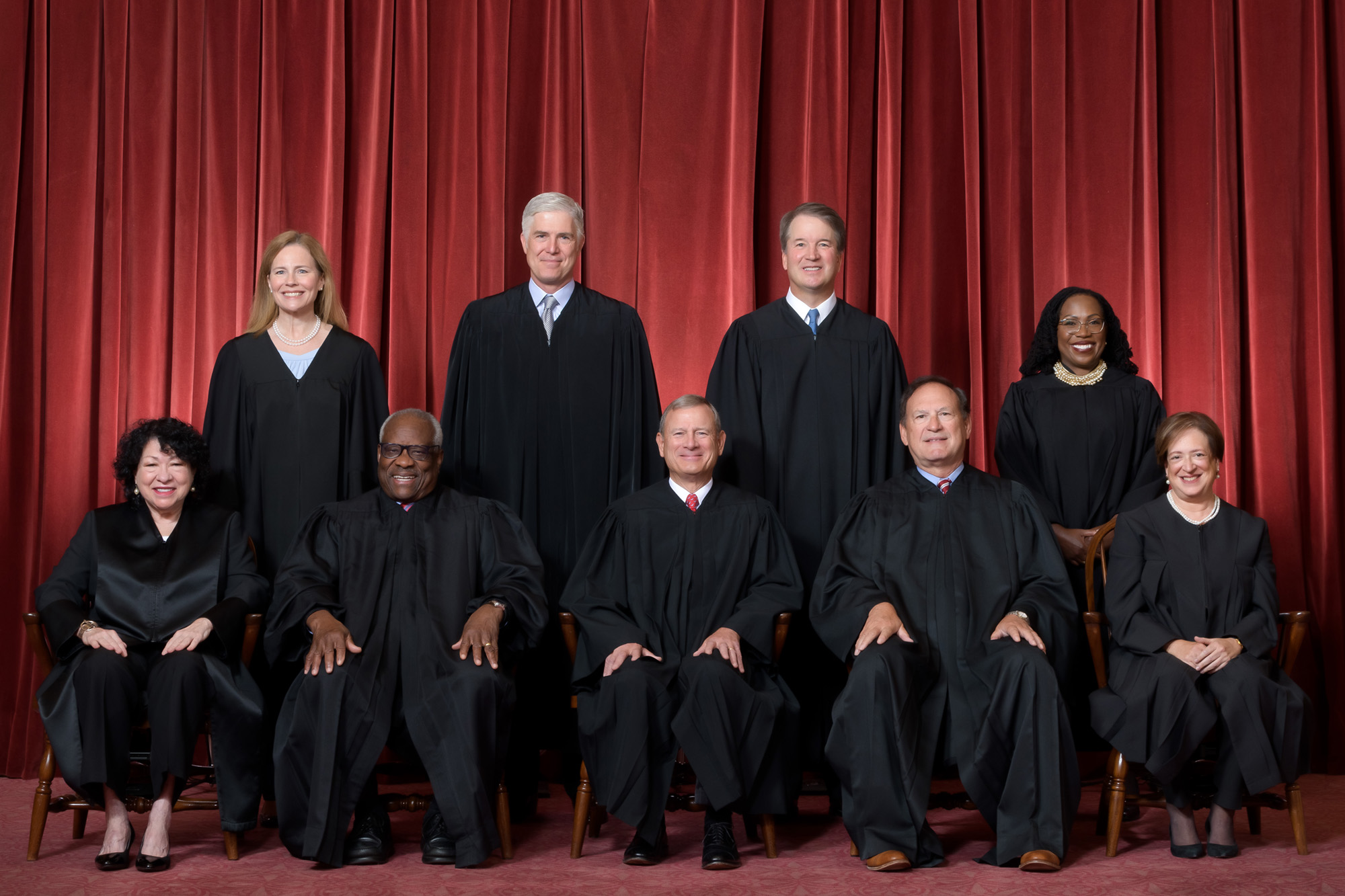
Front row, left to right — Associate Justices Sonia Sotomayor, Clarence Thomas, Chief Justice John G. Roberts, Jr., Associate Justices Samuel A. Alito, Jr. and Elena Kagan.
Back row — Associate Justices Amy Coney Barrett, Neil M. Gorsuch, Brett M. Kavanaugh and Ketanji Brown Jackson.
Image Credit: Collection of the Supreme Court of the United States
Audio snippets of each Justice speaking are intended to give a sense of the sound of the Justice’s voice and how he or she posed questions or spoke from the bench. Generally, the clips feature the first time a Justice spoke at oral argument or announced an opinion. Because of poor audio quality, however, sometimes we have substituted a clip from later in their first term.
Thanks to Pat Ward for providing the sound engineering and to Jerry Goldman for permission to use material from Oyez Project.
SUPREME COURT HISTORICAL SOCIETY 224 East Capitol St. N.E. Washington, D.C. 20003 Phone: 202.543.0400
[email protected], sign up for our newletters:.
This site is protected by reCAPTCHA and the Google Privacy Policy and Terms of Service apply.
SUPREME COURT HISTORICAL SOCIETY All Rights Reserved ©
Supreme Court gives win to Trump, ruling he has immunity for some acts in election interference indictment
WASHINGTON — The Supreme Court on Monday raised the bar for prosecuting Donald Trump, ruling that he has immunity for some of his conduct as president in his federal election interference case but maybe not for other actions, adding another obstacle for special counsel Jack Smith’s taking the case to trial .
In a novel and potentially consequential case about the limits of presidential power, the justices voted 6-3 along ideological lines to reject Trump’s broad claim of immunity, meaning the charges related to his attempts to overturn the 2020 election results will not be dismissed, but they said some actions closely related to his core duties as president are off-limits to prosecutors.
"Big win for our Constitution and democracy. Proud to be an American," Trump said in a post in all capital letters on his social media website, Truth Social.
Trump's Republican allies welcomed the ruling, while Democrats roundly condemned it. In televised remarks from the White House on Monday night, President Joe Biden called the decision "a terrible disservice to the people of this nation."
"No one, no one is above the law, not even the president of the United States. [With] today’s Supreme Court decision on presidential immunity, that fundamentally changed for all practical purposes,” Biden said.
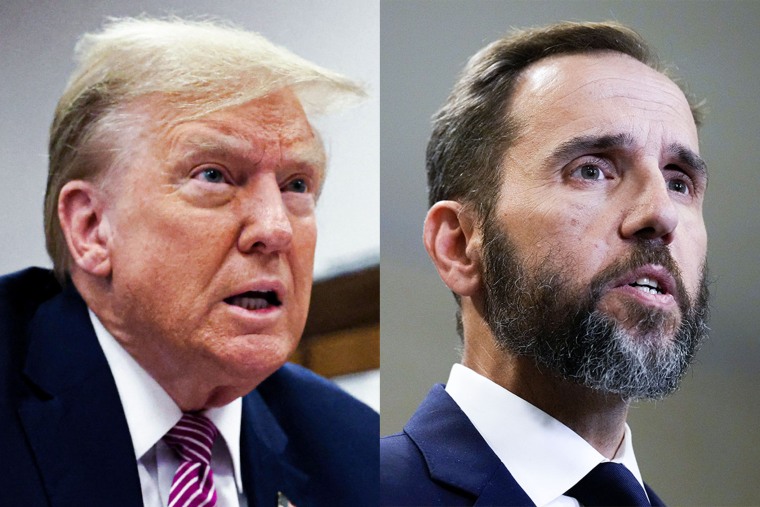
Chief Justice John Roberts, writing for the majority, said further proceedings are needed in lower courts to determine what conduct Trump can be prosecuted for. Among the conduct that the court determined to be core presidential powers and therefore subject to immunity are Trump's contacts with Justice Department officials. Trump is also "presumptively immune" from being prosecuted for his contacts with Vice President Mike Pence in the weeks leading up to the Jan. 6, 2021, attack on the Capitol by his supporters, Roberts wrote.
The indictment alleged that Trump sought to pressure the Justice Department to investigate unfounded claims of widespread election fraud as part of a plan to keep him in power despite Biden's election victory. Trump also wanted Pence to refuse to certify the election results as part of his ceremonial role at the joint session of Congress on Jan. 6.
"The President is not above the law," Roberts wrote. "But Congress may not criminalize the President's conduct in carrying out the responsibilities of the Executive Branch under the Constitution."
What that means for the case going forward remains to be seen. Trump’s lawyer conceded in the oral argument in April that at least some of the allegations in the indictment concern private conduct that would not be protected by any immunity defense. Likewise, the Justice Department lawyer arguing the case for the special counsel said the prosecution could go ahead even if some official acts were protected.
Smith's office declined to comment on the ruling Monday.
At a minimum, there will be further proceedings before U.S. District Judge Tanya Chutkan to determine what, if any, of the other conduct alleged in the indictment is protected. Among the acts she will review to determine whether they are subject to immunity are Trump's contacts with people outside the federal government, including state election officials such as Georgia Secretary of State Brad Raffensperger, whom Trump pressured to reject results showing Biden victories.
Prosecutors will also have a chance to rebut the suggestion that Trump's contacts with Pence are protected. That determination would hinge on whether prosecuting Trump for those actions would "pose any dangers of intrusion on the authority and functions of the executive branch," Roberts wrote.
In addressing the contacts with state election officials, Roberts wrote that the president has "broad power to speak on matters of public concern," including the conduct of elections. On the other hand, the president "plays no role" in the certifying of elections by states, he added. Chutkan needs to conduct a "close analysis" of the indictment to determine whether Trump's actions are protected, Roberts said.
In another blow to Smith, the court ruled that none of the conduct for which Trump is immune can be admitted as evidence at trial in any form.
The court's three liberal justices strenuously dissented , with Justice Sonia Sotomayor writing that the ruling "makes a mockery of the principle, foundational to our Constitution and system of Government, that no man is above the law."
The Constitution, she added, "does not shield a former President from answering for criminal and treasonous acts."
She warned that the ruling could have broad ramifications by protecting presidents for a wide variety of actions.
"Let the President violate the law, let him exploit the trappings of office for personal gain, let him use his official power for evil ends," Sotomayor wrote. "Because if he knew that he may one day face liability for breaking the law, he might not be as bold and fearless as we would like him to be. That is the majority's message today."
In a separate dissenting opinion, Justice Ketanji Brown Jackson described the ruling as a "five-alarm fire that threatens to consume democratic self-governance."
Even if the new proceedings do not take much time, there is little chance for the trial to conclude before Election Day. It had previously been suggested that a trial would not start until at least three months after the Supreme Court ruling, which would mean it would potentially not start until early October at the earliest. The trial itself could last up to 12 weeks.
The case put the national spotlight on the court, which has a 6-3 conservative majority that includes three justices Trump appointed. The court handed Trump an election-year boost when it ruled in March that Colorado could not kick him off the ballot .
The justices were also criticized for their delay in taking up Trump’s appeal, which some view in itself as a victory for him, as it meant the trial could not take place in March as originally planned.
Legally speaking, the case was unprecedented, as no president has ever been prosecuted after having left office. Therefore, the court was wrestling with a legal question that had never come before it: whether a president has some form of immunity for his core duties derived from the constitutional principle of separation of powers, which delineates the powers of the presidency in relation to other branches of government.
The legal argument focused on Trump’s official acts, with both sides agreeing that a former president does not have immunity for personal conduct.
The Supreme Court intervened after a federal appeals court had ruled Feb. 6 that Trump was not immune from prosecution, saying that once he left office he became “citizen Trump” and should be treated like any other criminal defendant. The Justice Department has long maintained that a sitting president cannot be prosecuted.
The appeals court did not analyze which, if any, of the conduct in the indictment could be viewed as an official act, a fact that appeared to irk some of the justices during oral argument.
Trump’s lawyers pointed to a 1982 Supreme Court ruling that endorsed presidential immunity from civil lawsuits when the underlying conduct concerns actions within the “outer perimeter” of the president’s official responsibilities.
Smith’s team argued that there is no broad immunity that prevents former presidents from being prosecuted for criminal acts committed in office.
The federal indictment returned by a grand jury in Washington in August consisted of four counts: conspiracy to defraud the United States, conspiracy to obstruct an official proceeding, obstruction of and attempt to obstruct an official proceeding, and conspiracy against rights, specifically the right to vote.
In another Jan. 6-related case, the court on Friday narrowed the scope of law penalizing the obstruction of an official proceeding. Trump also faces that charge, but legal experts say the Friday ruling may not affect his case .
Trump, the indictment said, conspired to “overturn the legitimate results of the 2020 presidential election by using knowingly false claims of election fraud to obstruct the government function by which those results are collected, counted and certified.”
The indictment focuses on Trump’s involvement in a scheme to submit fake election certificates to Congress in the hope that they would nullify Biden’s victory. The chain of events culminated in the riot at the U.S. Capitol on Jan. 6.
Trump, who pleaded not guilty, says he was simply expressing his concerns, which were not based on any evidence, that the election was marred by widespread fraud. The case is one of four criminal prosecutions Trump is currently battling.
Lawrence Hurley is a senior Supreme Court reporter for NBC News.
What Jack Smith’s changes tell us about his Jan. 6 case against Trump
Just over a year ago, special counsel Jack Smith indicted former President Donald Trump over his attempts to overturn the results of the 2020 election. There was a bit of déjà vu then on Tuesday when Smith revealed that he had obtained a superseding indictment against Trump, keeping the same four charges in place but with the backing of a different federal grand jury.
When comparing the version that was handed up on Tuesday with the original from last year , the changes appear to be focused on deconflicting the charges against Trump with the Supreme Court’s recent rulings on the matter. Smith opted against the most cautious approach he could have taken, stripping the case down to its essence to fully bulletproof it from further Supreme Court intervention. Instead, he has chosen to attempt the strongest case available against Trump within the fetters that the court has now placed on him.
Smith has chosen to attempt the strongest case available against Trump within the fetters that the court has now placed on him.
The most obvious changes relate to the court’s sweeping decision in Trump v. United States . Chief Justice John Roberts’ majority opinion found that all presidents, including Trump, have absolute immunity from criminal charges for exercising their “core Constitutional duties.” Roberts specifically cited Trump’s communications with the Justice Department — in which he tried to force the DOJ to back his false election claims — as off-limits for prosecution.
Smith has complied accordingly, deleting the entirety of the DOJ evidence from the indictment’s narrative, along with any references to Justice Department officials pushing back on his lies about mass voter fraud. Former Justice Department official Jeffrey Clark is no longer an unnamed, unindicted co-conspirator. Also gone are any references to the White House counsel and most references to any conversations Trump might have had with people on his staff within the executive branch.
Beyond the absolute immunity for a president’s core duties, Roberts also ruled that there is “presumptive immunity” for things that fall within the scope of the president’s “remaining official actions.” It now falls to Smith to convince U.S. District Judge Tanya Chutkan which of Trump’s actions were “unofficial” and thus beyond the reach of this presumed immunity — but he is blocked from being able to use “official acts” as evidence to make the case for why immunity should not be granted. The special counsel has accepted that challenge with gusto.
In the new indictment, Smith carefully makes clear why many of the steps Trump and his allies took were in no way part of the president’s job. Nowhere is that more evident than when it comes to Trump’s pressure campaign against former Vice President Mike Pence . After numerous other avenues had failed, Trump leaned on Pence to simply declare him the winner when presiding over the electoral vote count on Jan. 6, 2021. The opinion in Trump v. U.S. hinted that those conversations between the president and vice president might fall within the scope of presumptive immunity, but Smith didn’t mince words in disagreeing:
The Defendant had no official responsibilities related to the certification proceeding but he did have a personal interest as a candidate in being named the winner of the election. All of the conversations between the Defendant and Vice President below focused on the Defendant maintaining power.
Moreover, Smith takes great pains to emphasize how many of the people acting on Trump’s behalf did so in the name of his presidential campaign , not his presidency. There are still six unindicted co-conspirators listed in the document, he writes, “none of whom were government officials during the conspiracies and all of whom were acting in a private capacity.” The new indictment also addresses the role of then-White House chief of staff Mark Meadows, who has attempted to use his former position as cover from being investigated or indicted. Smith now clarifies that Meadows “sometimes handled private and Campaign-related logistics for the Defendant” when describing Trump’s now infamous call with Georgia Secretary of State Brad Raffensperger.
Interestingly, the new indictment’s edits also appear to consider a second Supreme Court ruling as well. A few days before the decision in Trump v. U.S., the court ruled in Fischer v. United States , which considered the Justice Department’s use of a federal statute on obstructing an official proceeding. Roughly a quarter of the Jan. 6 defendants were charged under Section 1512(c)(2) for their role in disrupting the counting of electoral votes, according to the Justice Department .
Interestingly, the new indictment’s edits also appear to consider a second Supreme Court ruling as well.
There was concern when the case was being adjudicated that the court might entirely invalidate two of the four charges against Trump. The 6-3 decision did narrow the scope of the law in question but did so in a way that let the charges against the former president stand. Roberts, again the author of the majority opinion, wrote that prosecutors must now show that defendants “impaired the availability or integrity for use in an official proceeding of records, documents, objects, or as we earlier explained, other things used in the proceeding, or attempted to do so.”
In the new indictment, Smith’s team has done just that. When describing the actual events of the Jan. 6 attack, the new version adds in more details about Congress’ work that day to certify the Electoral College’s votes, focusing on the documents that the rioters threatened after breaching the Capitol. With that shift, the prosecution now also highlights the timing of the attack and its aim of disrupting the vote count.
“At approximately 1:11 p.m., the Vice President opened the certificates of vote and certificates of ascertainment that the legitimate electors for the state of Arizona had mailed to Washington, consistent with the [Electoral Count Act],” the indictment now reads. Two paragraphs later, having noted that Trump was back in the White House watching events unfold, the prosecution describes the Capitol being breached and forcing the Senate to recess. “At approximately 2:20 p.m., the official proceeding having been interrupted, staffers evacuating from the Senate carried with them the electors’ certificates of vote and their governors’ certificates of ascertainment,” Smith wrote.
The superseding indictment is not guaranteed to kickstart the trial, which was originally scheduled to begin this past March. There are still several elements that will require Chutkan to rule on whether they can be included in his arguments. Trump’s lawyers are most likely to object to the prosecution’s references to his conversations with Pence, arguing that those discussions were within the scope of his office. But they may wind up throwing whatever they can into their filing to attempt to delay the proceedings further.
And, thanks to the vagueness of the immunity test that Roberts put forward, whatever ruling Chutkan makes will likely be appealed. The matter may even make its way back up to the Supreme Court, as I predicted previously , giving the conservative justices another chance to cover for Trump. But Smith has done a lot of the heavy lifting to ensure that, should Trump lose in November, this case can continue forward into the next administration.
Hayes Brown is a writer and editor for MSNBC Daily, where he helps frame the news of the day for readers. He was previously at BuzzFeed News and holds a degree in international relations from Michigan State University.

COMMENTS
Learn how to visit the Supreme Court Building, the home of the nation's highest Court and a symbol of its independence. Find out the hours, accessibility, and possible impacts of the Court's business on public access.
Learn how to visit the Supreme Court building, where it is located, when it is open, and what to expect when attending oral arguments. Find answers to common questions about tickets, photography, attire, and more.
Learn about the history, architecture, and functions of the Supreme Court, the highest tribunal in the nation for constitutional and legal issues. Find out how to attend oral arguments and access opinions and orders of the Court.
The Supreme Court Building is located at 1 First Street St NE across the street from the US Capitol Building and the Library of Congress. Use this link for directions to the Supreme Court . Or let us take you here on one of our pay-what-you-like Capitol Hill Tours. It is a 7 min walk from the Capitol South Station Metro ( Blue, Orange, Silver ).
Visit a Federal Court. Many federal courthouses are historic buildings, and all are designed for the public to visit and learn first-hand about the tradition and purpose of the American judicial process. The public may visit a court to watch each step of the federal judicial process, with few exceptions.
The Supreme Court is the highest judiciary authority in the United States and hears about 100 cases each year, although more than 7,000 are submitted before them. Visitors can tour the Supreme Court building, hear lectures on the history of the court and how it works, sit in on sessions on specified days and times and view various exhibits ...
The United States Supreme Court is open to the public Monday through Friday, 9 a.m. until 4:30 p.m. Although the Court does not offer guided walking tours, visitors are encouraged to tour the building on their own. Information about Courtroom Lectures and other exhibits the Court offers can be found here.
Chairs of Supreme Court justices behind the courtroom bench on July 9, 2019. ... Before March 2020, visitors could tour the court, view exhibits and visit the cafeteria and the gift shop.
The Court is increasingly popular among visitors to Washington, and the number who came to look and listen reached 900,000 in 1993. Visitors who want to see the Court at work should check its schedule in advance. Usually it alternates two weeks of hearing cases, on Monday through Wednesday, with two weeks of recess, for opinion-writing.
The U.S. Supreme Court is the final appellate court of the U.S. judicial system. It has the power to review and overturn the decisions of lower courts. The Supreme Court also has original jurisdiction (being the first and final court to hear a case) in certain cases involving public officials, ambassadors, or disputes between states.
The building also hosts rotating exhibitions from time to time. Sadly, no visitors are permitted to the "highest court in the land"—the indoor basketball court on the top floor. Closed Saturday, Sunday, and federal holidays. 1 First St., NE; 202-479-3000. This article appears in Washingtonian's Welcome Guide.
The Court is the highest tribunal in the Nation for all cases and controversies arising under the Constitution or the laws of the United States. As the final arbiter of the law, the Court is charged with ensuring the American people the promise of equal justice under law and, thereby, also functions as guardian and interpreter of the Constitution.
Highlights include the John Marshall statue, portraits and busts of former Justices, and two self-supporting marble staircases. The Courtroom is located on the first floor. Court sessions, including the handing down of opinions, are also open to the public. Courtroom seating is on a first-come, first-served basis. Visitors should be aware that ...
on Apr 3, 2020 at 10:00 am. If you wanted to find out how to see the most powerful court in the United States in action, you would probably turn to the internet first. The first result that pops up comes from the official website of the Supreme Court and looks promising: Visitor's Guide to Oral Argument. The last expandable header on the page ...
Supreme Court. 1,524 reviews. #37 of 649 things to do in Washington DC. Government Buildings. Closed now. 9:00 AM - 3:00 PM. Write a review. About. A Corinthian-style building where the final guardians of the Constitution deliberate.
Supreme Court Background Article III of the Constitution establishes the federal judiciary. Article III, Section I states that "The judicial Power of the United States, shall be vested in one supreme Court, and in such inferior Courts as the Congress may from time to time ordain and establish." Although the Constitution establishes the Supreme Court, it permits Congress to
Basically yes. If you go through the Visitor's Guide and click on Oral Arguments at the bottom of the page there is a guide on how to get into the court room while it's in session: All oral arguments are open to the public, but seating is limited and on a first-come, first-seated basis. Before a session begins, two lines form on the plaza in ...
Visit the Supreme Court Historical Society's CIVICS website to learn about the history and cases of the Supreme Court of the United States and gain insights into key figures associated with the Court. ...
The recent US Supreme Court decision changing voter registration rules in Arizona has voting rights advocates anxious about how the justices will approach emergency election appeals in the runup ...
Visit . Fellows Program. Contact Us. Live Audio. Today at the Court - Friday, Aug 30, 2024. The Supreme Court Building is open to the public from 9 a.m. to 3 p.m. Courtroom Lectures available within the next 30 days. ... Steve Petteway, Collection of the Supreme Court of the United States
The Supreme Court began rejecting Wheeler's reasoning within a few years. Finally, in United States v. Guest, 383 U.S. 745 (1966), the Supreme Court overruled Chief Justice White's conclusion that the federal government could protect the right to travel only against state infringement. [2] [3] [10]
The Supreme Court raised the bar for prosecuting Donald Trump, ruling that he has immunity for some of his conduct as president in his federal election interference case, but maybe not for other ...
Backed by Supreme Court opinion, O'Fallon is poised to ban homeless camps ... 100 years ago: O'Fallon youth escape detention home, traverse woods, to visit Mom ... Take Us With You.
For more latest updates on the news : Visit Our Website : https://ntvtelugu.com/ Subscribe to NTV News Channel: http://goo.gl/75PJ6m Like us on Facebook...
The Supreme Court of the United States is located on First Street NE between East Capitol Street and Maryland Avenue, adjacent to the U.S. Capitol and the Library of Congress. View Capitol Hill area map. Visitors may enter the building from the plaza doors located on the left side of the main steps. An accessible ramp is located along Maryland ...
The special counsel's superseding indictment against Trump covers his bases on more than just the Supreme Court's immunity ruling. IE 11 is not supported. For an optimal experience visit our site ...
These sessions are open to the public. The Court convenes for a session in the Courtroom at 10 a.m. The session begins with the announcement of opinions - decisions in argued cases - followed by the swearing in of new members to the Bar of the Supreme Court. These sessions, which typically last 15-30 minutes, are open to the public.
The Supreme Court declared on Monday that former presidents have immunity for their official actions, upending the case against Donald J. Trump over his attempts to subvert his 2020 election loss.